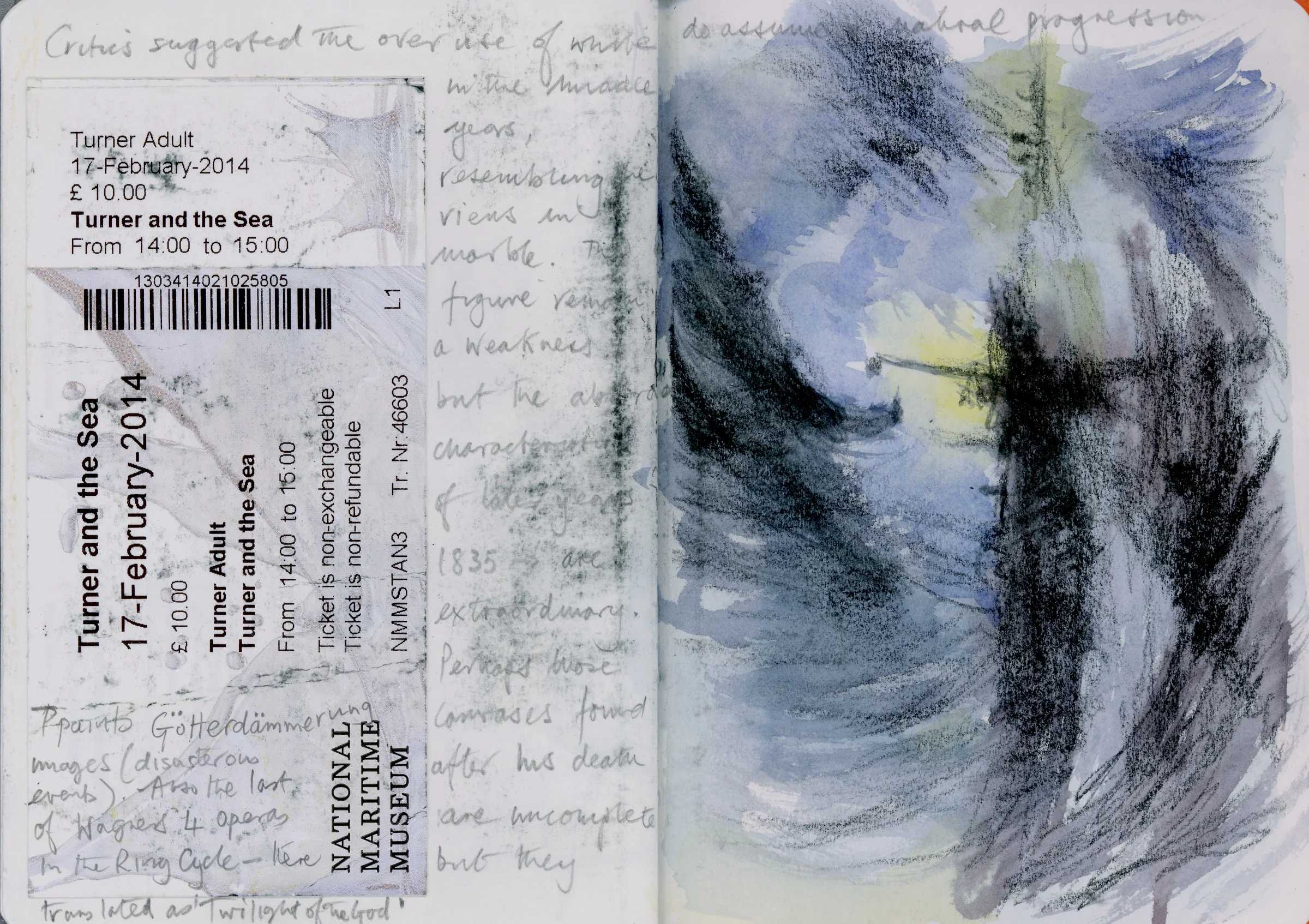Bank Holiday and the three Henrys
/
Spent a rather pleasant Monday at Tate Britain and ended up drawing in one of the Henry Moore rooms, after the most marvellous of light lunches in the members room. I thoroughly recommend the quiche lorraine and salad; simply but absolutely delicious (and if you're not a member simply ignore the stairs and head for the lift; this way one can easily sneak past the membership desk...everyone seems to do it...I thinks it's a deliberate Tate ploy to sell more cakes).
I also especially like what has been done to the Duveen Galleries. Are Phyllida Barlow's creations, entitled 'dock', good art? Probably not but they do make one smile...whilst simultaneous hoping that they might collapse.
I also especially like what has been done to the Duveen Galleries. Are Phyllida Barlow's creations, entitled 'dock', good art? Probably not but they do make one smile...whilst simultaneous hoping that they might collapse.
Ceramics and Pie
/
A morning at the V&A continually interrupted by impromptu performance of Shakespeare; Ophelia, for example, waded through the quandrangle pond and Romeo and Juliet did their bit at the balcony in the Paul and Jill Ruddock Gallery. Then, after another of those shockingly good pies was consumed for lunch, I sought the quiet sanctuary of the ceramics galleries.
A View From a Bridge
/
****
A stark yet powerful portrayal of what Sophocles might have produced if reincarnated to live in 1950s America. Strong performances from all and a lovely symmetry between beginning and end. Almost perfect but for the British American accents and a too puny a lad cast as Marco...no way could he empty a ship alone.
Crosby beach
/
A pleasant day meandering amongst the Anthony Gormley casts; my determination to produce half a dozen studies bettered by the wind and then by the rain. If you are ever in the vicinity I recommend Katie's Cafe for breakfast. If feeling brave one might even attempt the 'Big Dave' (half a pound of sausages, ten rashes of bacon, a dozen eggs, ten pieces of toast and a bucket of tea...well you get the picture).
Matisse at the Tate Modern
/****
Give a man in wheelchair a pair of dressmaking scissors and some large sheets of brightly painted paper and, just over half a century later, the Tate can hold a retrospective. Simultaneously child-like and sophisticated these cut-outs undoubtably act as a precursor for much of twentieth century abstract art.
The Silver Tassie
/***1/2 One can see why Yates criticised The Silver Tassie for it's lack of a central character and lacklustre narrative, but it's not that bad. Our hero Harry Heegan is more the whinging footballer than war hero, but there is a wonderful tension between him and his girl Jessie. Mrs Foran, who see her husband's return to the front as her renewed freedom, also adds to the sense of a gender divide. Although the music hall-like comedy duo of Simon and Sylvester carry the first act, it is the pyrotechnic of the second (take ear plugs) that stay in one's shell shocked head long after the play has ended. Soldier sing 'why are we here' to the tune of Auld Lang Syne, ridiculing the pomposity of the officer class. During the party back in Blighty, both Heegan's breakdown and heartless female sexuality are reinforced. In the final scene woman dance with puppet soliders, collapsing and limp.
Greenwich Revisted
/****
It seems a life time ago since I counted myself as one of the residents of Greenwich, and in essence things have not changed (the Naval College, Museum, Royal Observatory and park). Turner and the Sea at the National Maritime Museum is well worth a visit. In the basement the works may be starved of natural light and a little crowded together, but still one is able to gain a wonderful overview of how the work developed and how it sits with the Dutch tradition of seascapes.
HOMAGES
/
Homage No. 1 (to Durer)
This is where the idea of a 'Homage' emerged. An object (or objects) that point or hint at a painting. Perhaps they are merely a series of personal indulgences. 'Homage No. 1 (to Durer)' stemming from an Exhibition of Durer etchings at the Lady Lever Gallery. A print of Adam and Eve pointed to the painting seen recently in the Prado. Eve the temptress with forbidden fruit. The peace of the garden and innocence of man about to be forsaken for all of eternity.
The V&A
/Spent the weekend in the Victoria & Albert and even though one of the cast rooms was closed my spirits are always raised by this marvellous collection. It might be just on the edge of the twenty minute radius offered by Boris Bikes from my usual SW1 stomping ground, but the frantic peddling is well worth it...not to mention a Sunday lunch to die for.
Houghton Revisted
/*****(yes it was that good)
Arrived early on a Sunday Morning to catch the last day of of Houghton Revisited, before the paintings are boxed and shipped back to the Hermitage. Was this a once in a lifetime chance to see these works in their original setting? Did Catherine the Great get the art bargain of the millennium when acquiring Sir Robert Walpole's extraordinary collection?...the answer is surely yes to both questions.
Whilst waiting for the doors to open a local woman complained she had driven twelve miles that morning and why wasn't there a restaurant open for coffee. Trumping this, a couple said they had come up from London the night before especially to see the exhibition. Then it was the turn of a short, immaculately dressed man, speaking nonchalantly in a New York drawl, they had come over the pond from New York just yesterday...all was silent. I smirked and continued to draw the swelling crowd.






























